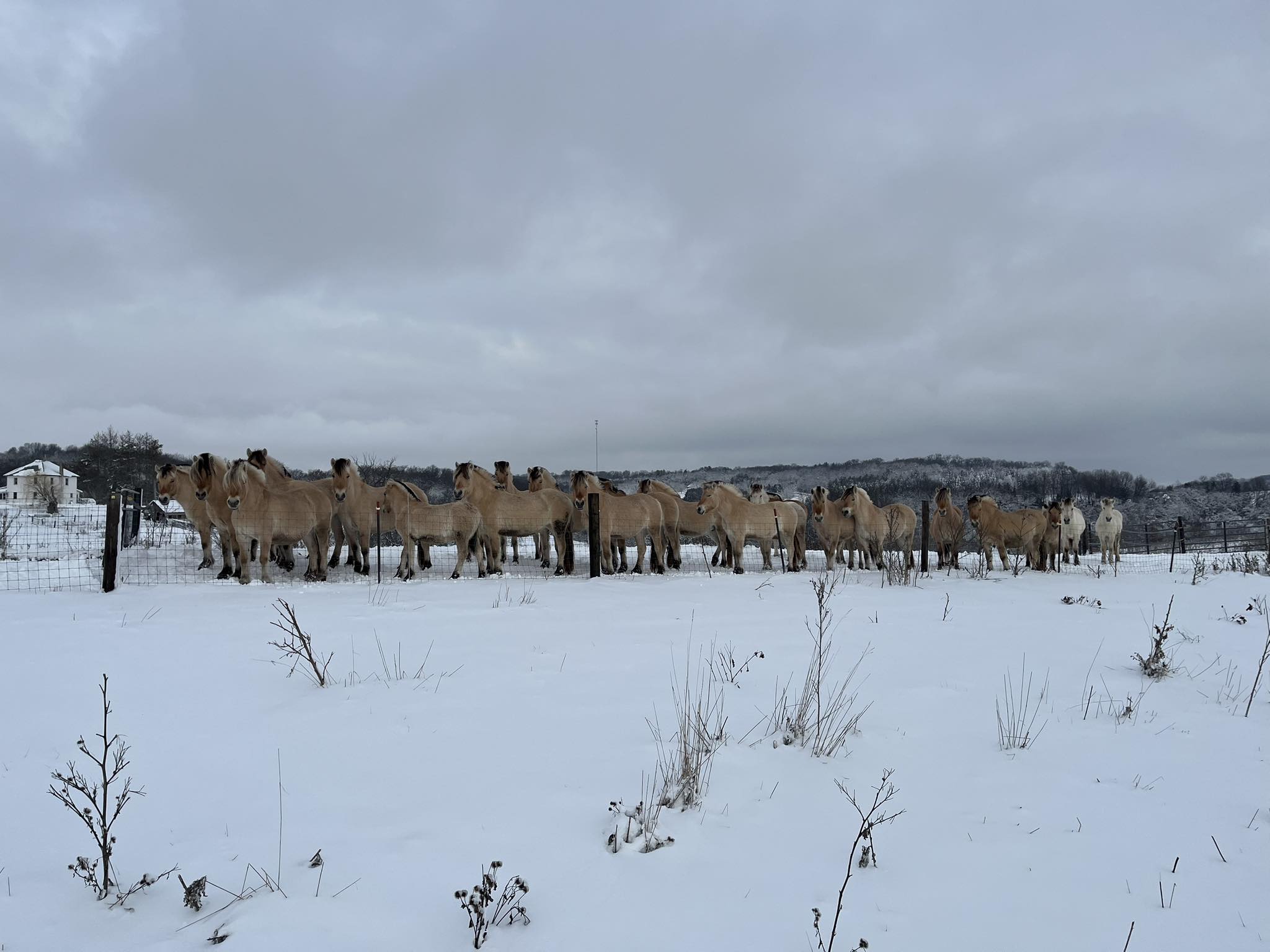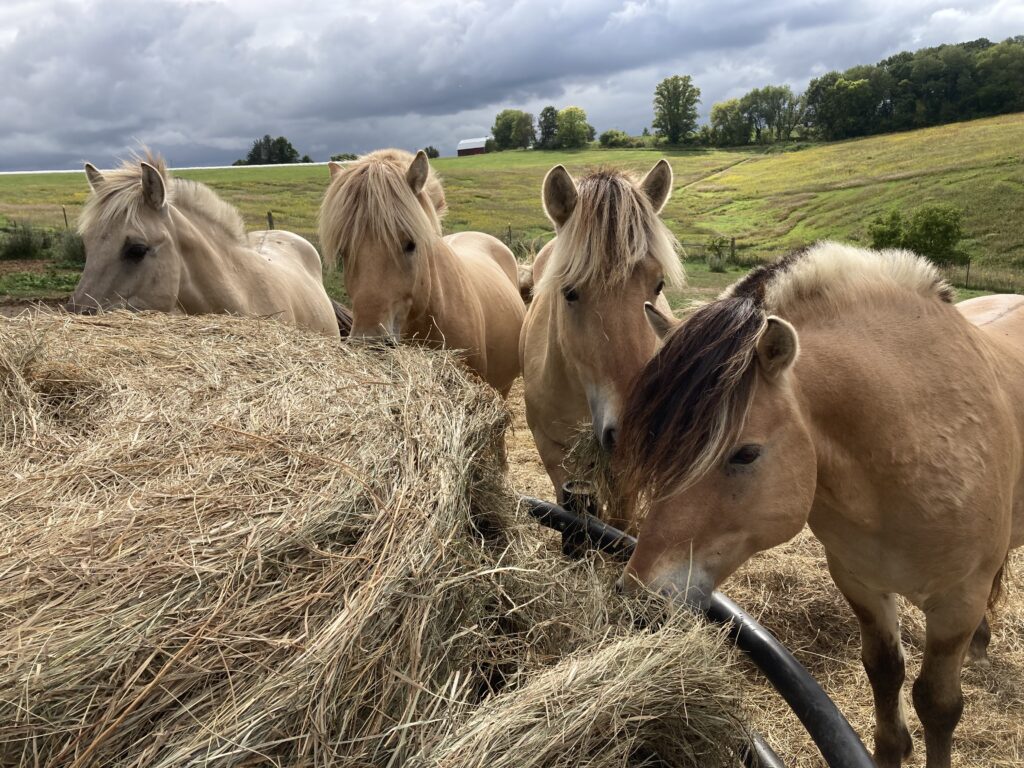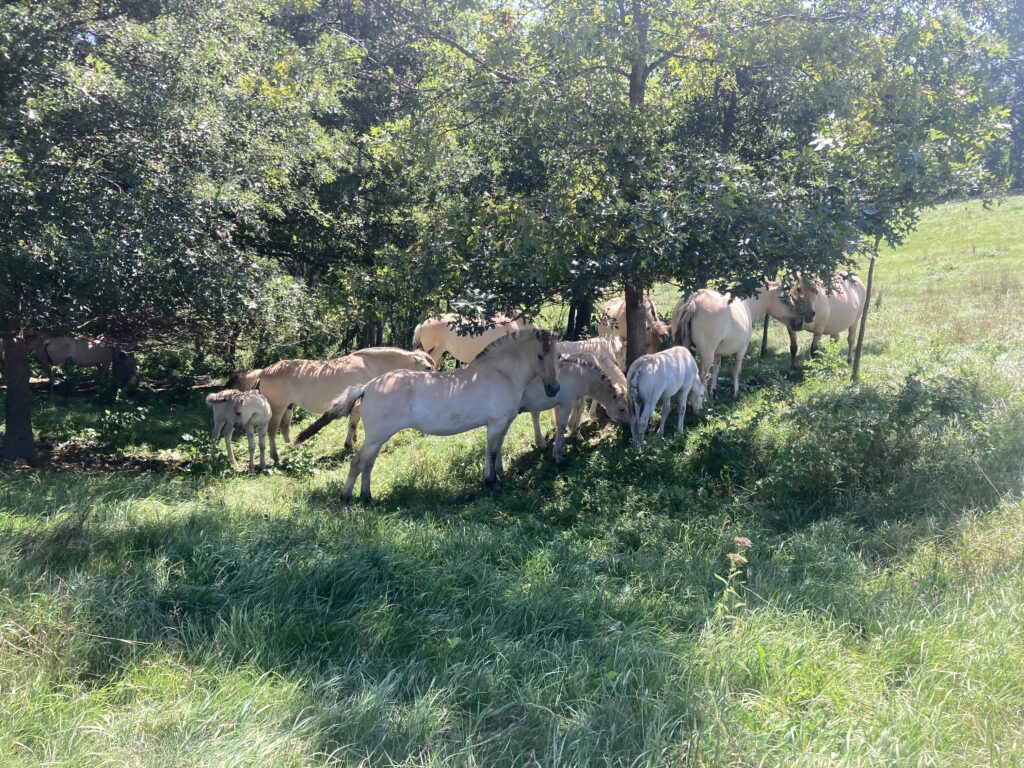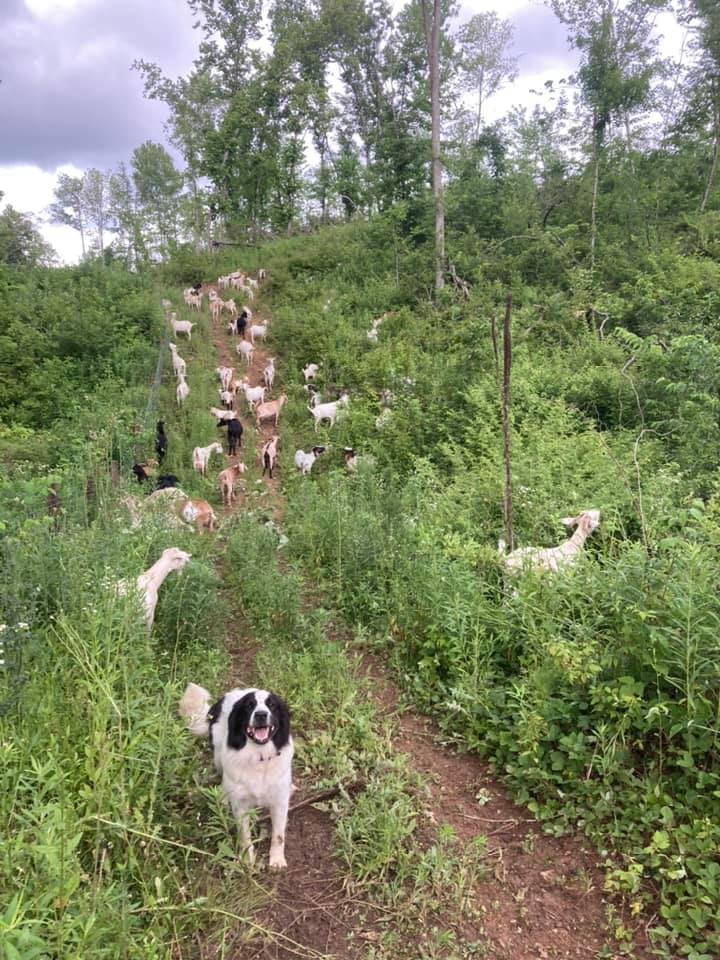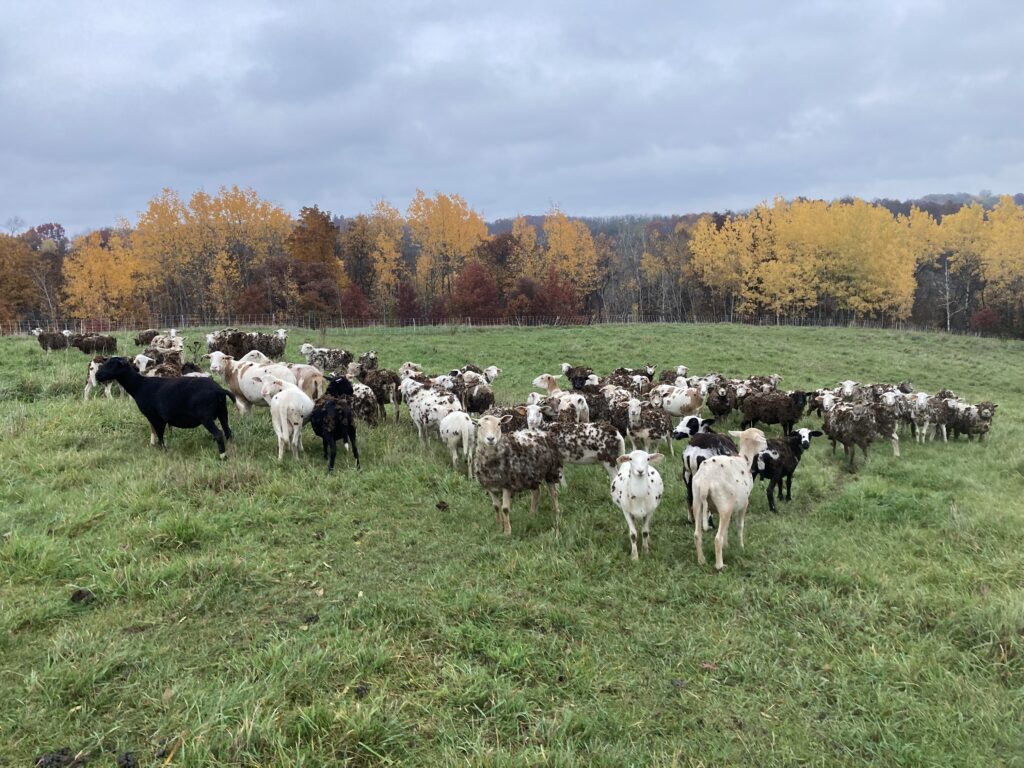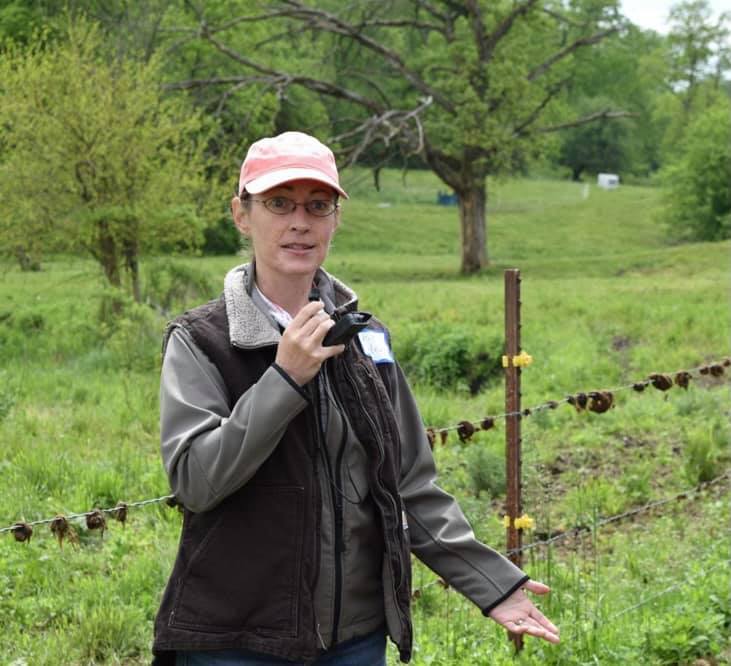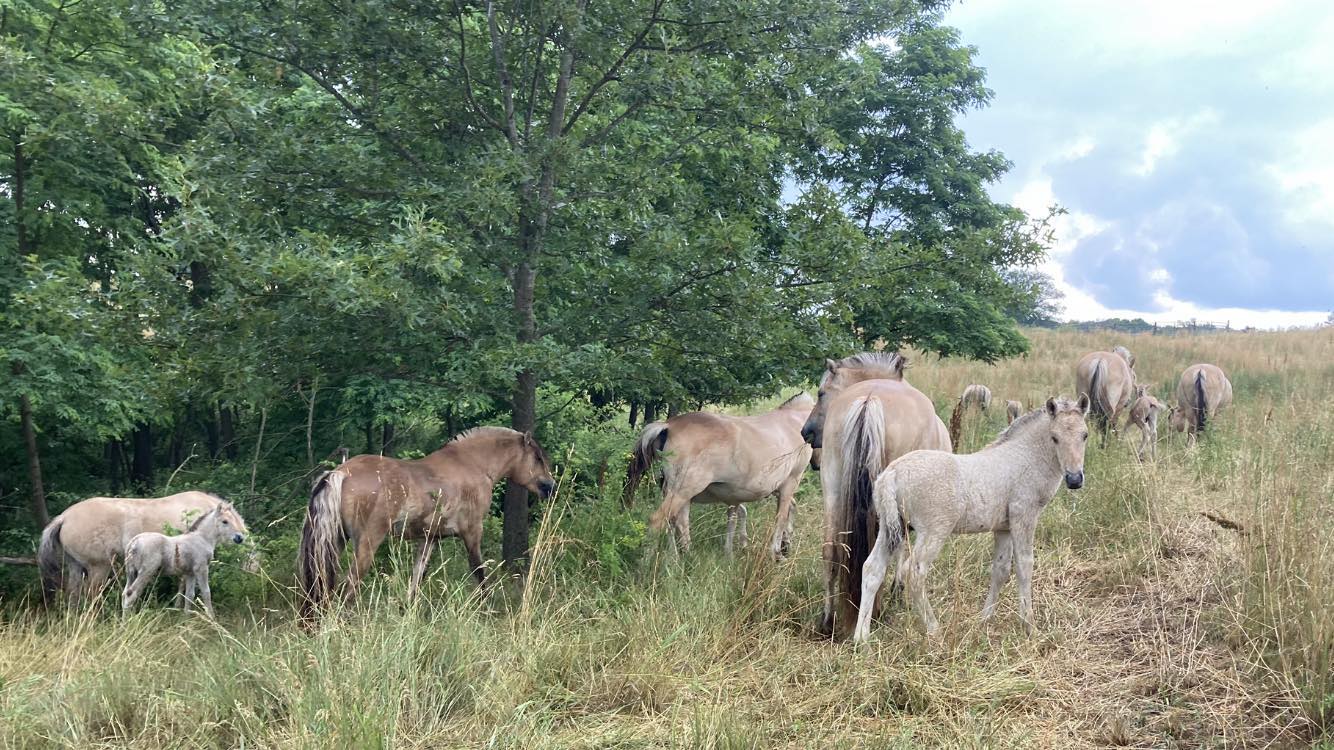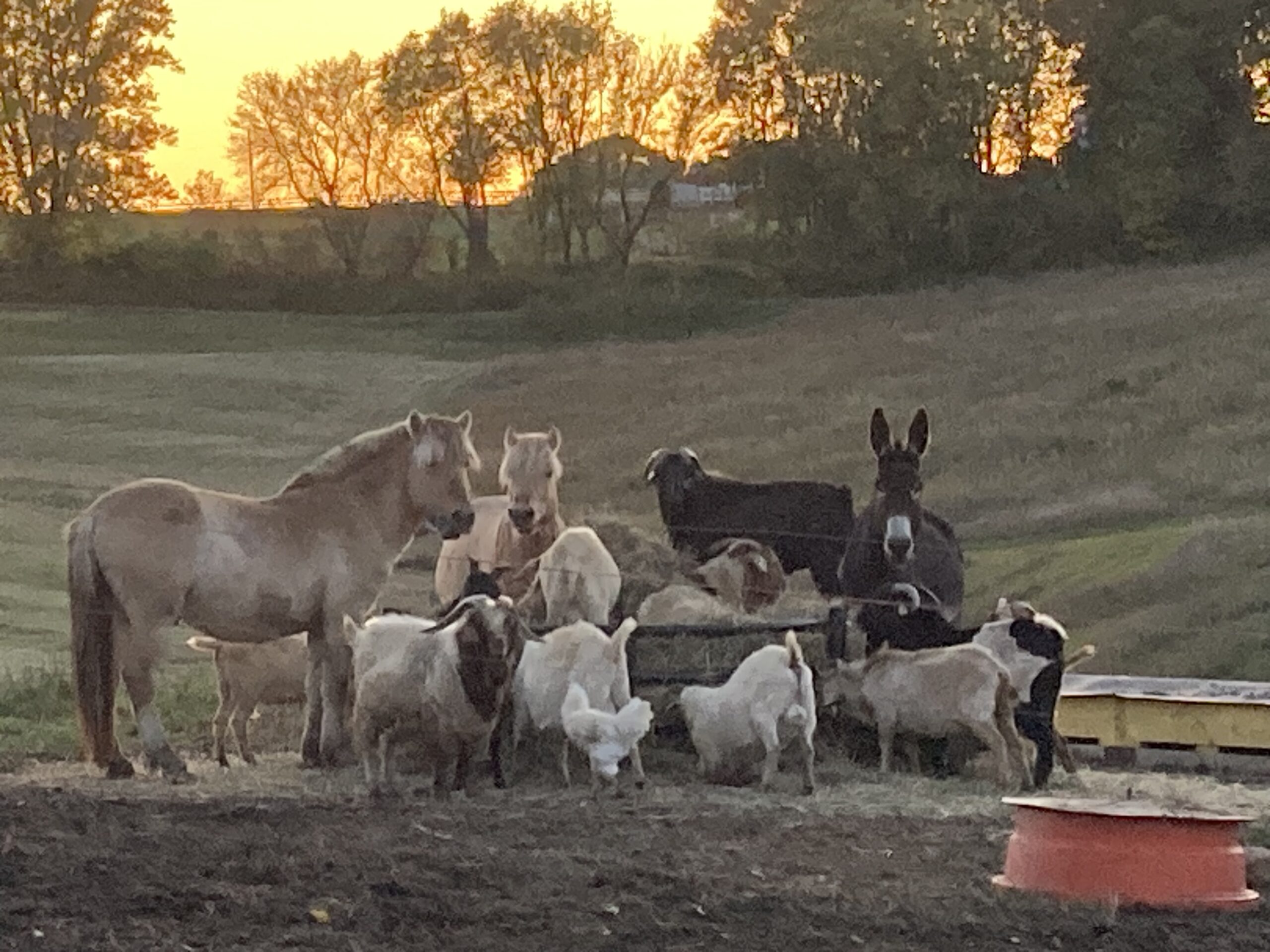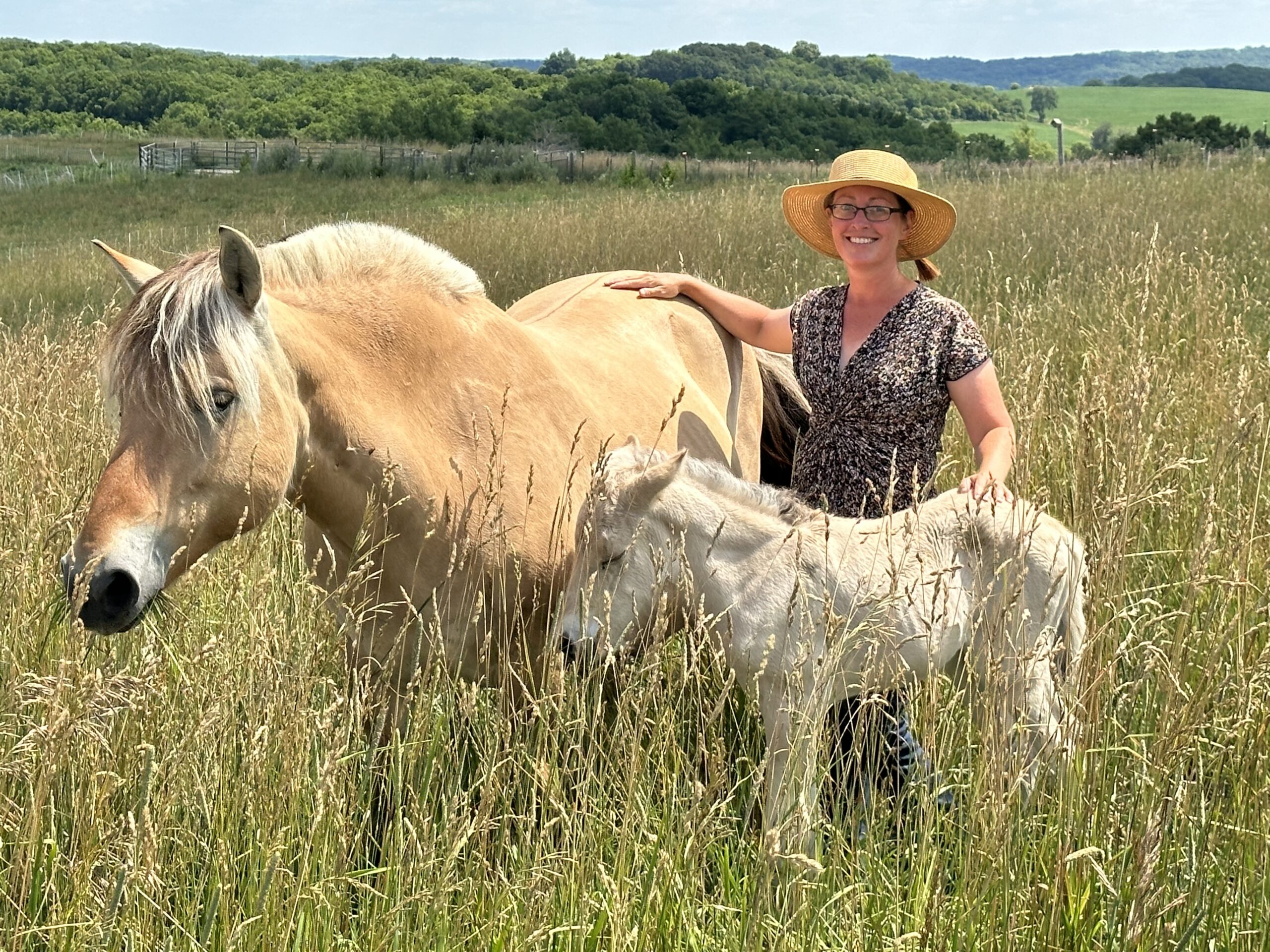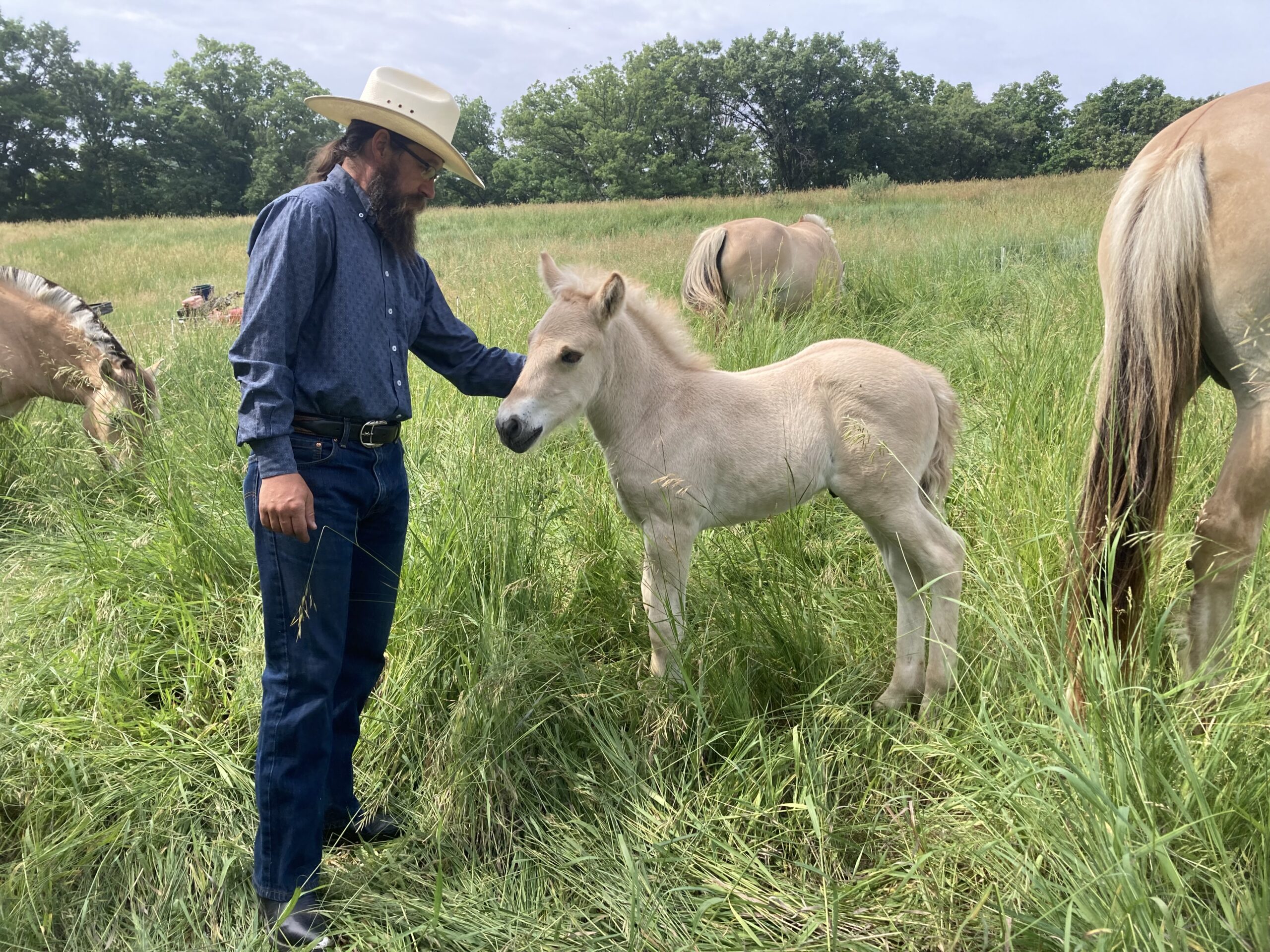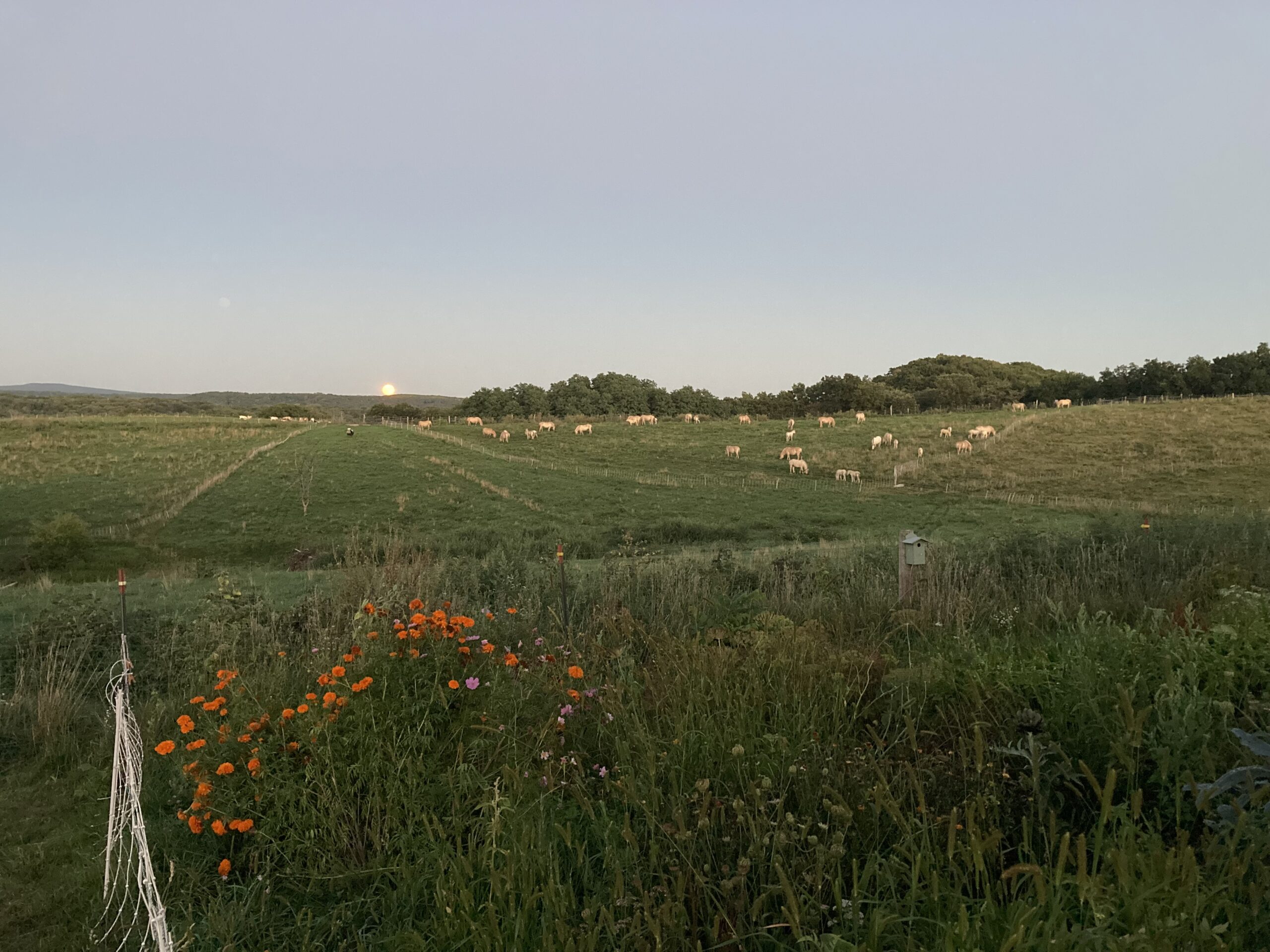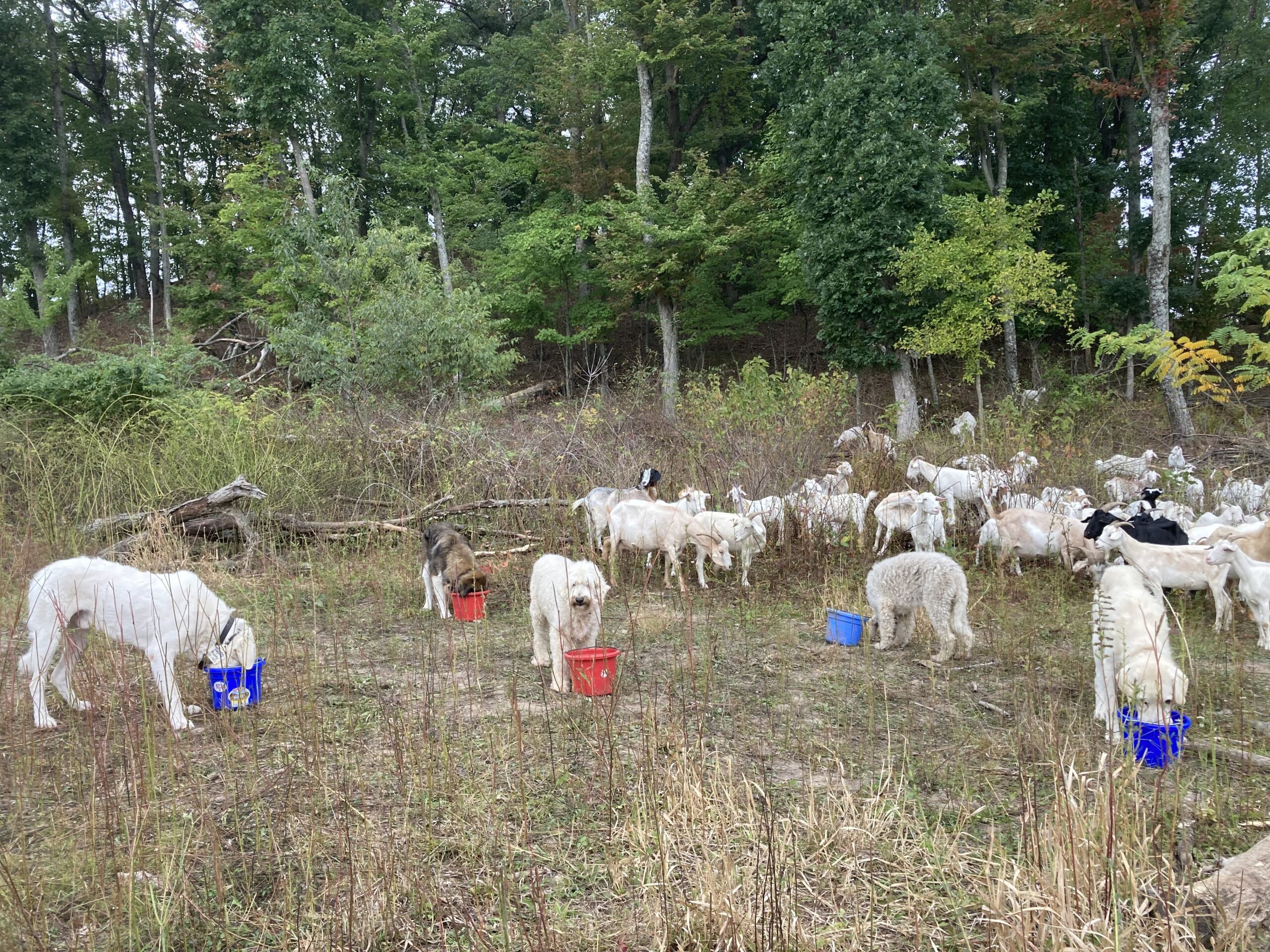WELCOME TO OUR FARM
We are a diversified, forage-based livestock operation managing two hundred and thirty acres in the Driftless Area of southwest Wisconsin. We (Allen and Cherrie) are first generation farmers who began operating the farm together in 2015, where we breed Norwegian Fjord Horses, meat goats, meat sheep, and a small flock of layer hens, all protected by livestock guardian dogs .
We breed Norwegian Fjords through a happy accident, but are deeply committed to the breed and its preservation. When she was twelve years old, Cherrie wanted a Belgian to ride, drive and use for draft work, but was informed that they eat too much and was instructed to purchase something with lower caloric needs. Living in Stoughton, Wisconsin at the time, which has a deep Norwegian heritage, she was drawn to the small, versatile, hardy farm horse of western Norway, the Norwegian Fjord. She found a local breeder with a large selection, chose a mare that had a beautifully smooth ride, chose a stallion to breed her, and brought home her first pregnant mare in 1991. Her first stallion was born in 1992 and she has been breeding Fjords ever since.
Cherrie first got goats when farming in Kansas in 2008, and she brought them back to Wisconsin to put their brush-munching proclivities to use against the aggressive woody vegetation that she and many other ecologists have fought with cutting, herbiciding, and burning. The goat herd served as a part of Cherrie’s research for her Masters in Agroecology. Allen milked Nubians in West Virginia prior to moving to Wisconsin, and some of those goats and their guardian dogs joined the herd that Cherrie had produced.
Cherrie first got sheep and LGDs in 2001, had multiple flocks of different breeds and mixes over the years, and the current flock were originally selected to train our English Shepherd herding dog and to mow our 3.5 acres of lawn. We have a mix of breeds, with selection for meaty hair-types that need no interventions to be healthy and productive.
The goat herd and sheep flock have been selected for low-input management on forage and brush diets and are raised on a combination of lawn and silvopasture, grain-free, and regeneratively. The livestock guardian dogs are bred for on-farm use to protect the goats and sheep from predators.
In addition to the commercial activities the farm is also our home where we have many other pursuits including research, gardening, herbology, and making lambsagna (lamb lasagna, and other seasonally-appropriate lamb-based cuisine), cheese, beer and preserved functional foods.
Welcome!
